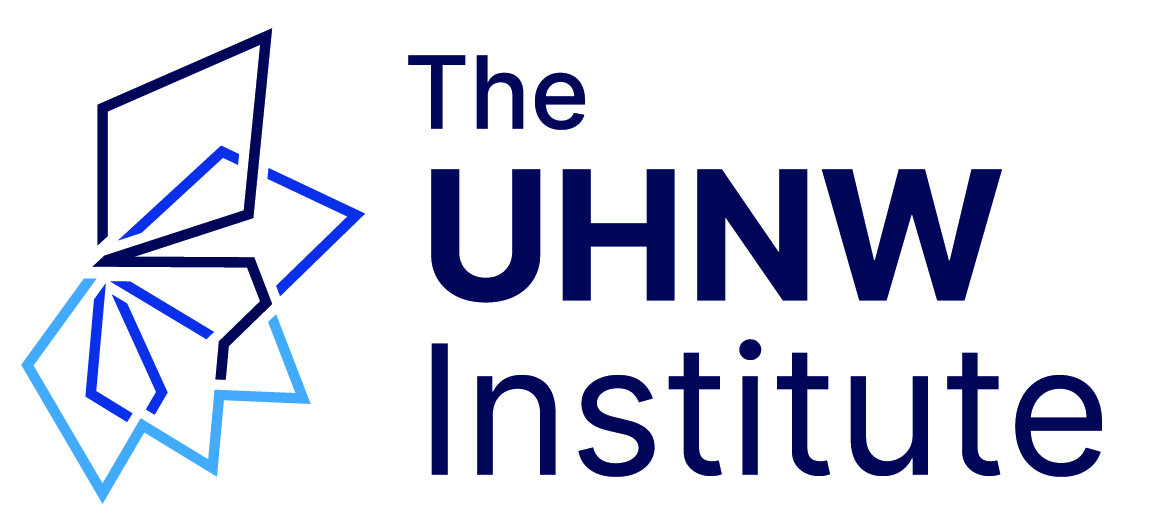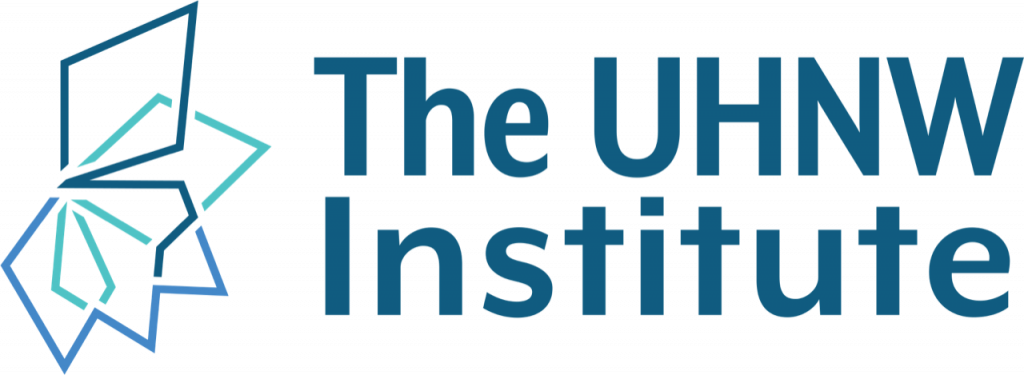Creating Connected Trusting Relationships with Clients: Guide to an Integrated Discovery Process
Previously published by Family Wealth Report on April 20, 2021.
When an ultra-high net worth advisor gets a call from a prospective client, it can lead to a multifaceted engagement, a minor service, or even no service at all. This article, from senior figures in the North American industry, explores how to achieve the best outcome.
It is obviously important for wealth advisors to know how to find new clients and keep that pipeline busy. And turning a prospect into an enduring client is easier said than done. When it comes to ultra-high net worth clients, the challenges rise another notch.
To discuss this area is the UHNW Institute, with which Family Wealth Report is the exclusive media partner. Authors Dennis Jaffe, Tom McCullough and Jim Grubman work through some of the terrain. (More on the authors below.)
Introduction
When an ultra-high net worth (UHNW) advisor gets a call from a prospective client, it can lead to a multifaceted engagement, a minor service, or even no service at all. Potential clients often come in with specific problems, but before the advisor takes action, an important process of inquiry and relationship building must take place. Building an enduring connection, however, depends less on the advisor’s credentials and technical skills than on how the initial conversation is managed.
The primary objective is for the advisor to get to know the prospective client family as people with complex familial and financial needs. This means learning about their goals, their fears, their resources, what is most important to them, and what problems they want solved. Current societal disruption, global uncertainty, and generational change are having an increasing impact on every family enterprise. The role of today’s UHNW advisor cannot be limited to simply managing and safeguarding wealth. It is about helping diverse family members with many financial and non-financial aspects of their lives.
The question is, with so much territory to cover, how to begin?
Modern UHNW advisors do well when expanding from being technical experts delivering a narrowly defined service to becoming generalists who look at many dimensions of the family’s business and life before deciding what needs to be done. This article offers guidance on starting a client relationship using an integrated, collaborative process of discovery.
Knowledge, skills needed for an effective discovery process
To establish the modern client relationship, an advisor must connect deeply with the client, creating enough trust for the client to get comfortable and be ready to open up. At the same time, advisors must demonstrate their own relevance, ability to make a difference, and vision about possibilities that the client may not even be aware of.
Discovery meetings broaden the client’s sense of what areas will be explored in the future and how the advisor and client will work together. In many ways, the discovery meeting sets the tone for everything that follows.
To engage in effective discovery interviews, advisors need to broaden their knowledge and skills in order to do the following:
— Enquire comfortably into many different areas of the client’s life and make connections among them.
— Develop the emotional intelligence to ask sensitively about a client’s feelings and concerns, then to listen and respond to the deeper, more personal meanings of what is being said.
— Demonstrate a sincere interest in the lives of their clients using follow-up statements and paraphrasing to ensure that they understand what their clients are saying.
— Avoid overstepping their expertise or giving advice in areas where they are not qualified, while nonetheless discovering where there are “pain points” and helping direct clients to the resources and professionals needed.
Notably absent from this process is figuring out how to sell clients something off the shelf—consulting, insurance, investments, or subscriptions. Instead, the focus is purely on the prospective client and ensuring that they are only offered products or services that truly meet their needs.
Practical guidelines for discovery interviews
The discovery interview has two major goals: to build a trusting relationship and to frame the client’s dilemmas and needs in a broader context. This may require slowing the client down and making room for a longer, more effective conversation. Clients, through no fault of their own, often begin by asking overly specific questions that can take the advisor down a rabbit hole. In responding to the initial query, the advisor can miss the deeper issues that underlie the client’s concern. A client may say, “My investment manager is terrible. Should I fire him?” Most advisors will then start to unpack this question in detail:
What was the investment performance? How long have you had the manager? How much of your money is with this manager?
Digging deeper may reveal that the real issue is something else entirely. Perhaps the client has a spending problem and unrealistically wants their investments to outperform both the markets and their excessive spending. Or the client likes to micromanage investing and then blames the manager when things go sour. The investment manager issue may be a red herring. While there is usually some catalyst that brings a prospective client to a new advisor, it behoves the savvy advisor to take time to explore the full landscape before committing to a path of action.
To have an effective meeting that focuses on deeper goals, the advisor needs to do the following:
Set the tone
When advisors set a relaxed tone with openness and patience, clients will feel more comfortable and be ready to share and to ask questions. Advisors can project these qualities by quietly waiting for answers from both spouses and/or all members of a family. Gently but firmly, good advisors try not to let one person dominate the conversation, even if that is the normal family practice.
Interviews should begin with open-ended questions to discover a client’s main concerns before channeling the conversation into areas that are the advisor’s particular expertise.
As stated above, it is also important to avoid immediately taking off from a client’s first expressed concern. The client may be framing a problem incorrectly or even floating a trial balloon meant to learn whether they can trust the advisor with their real concern.
For effective discovery meetings, the client should be doing most of the talking. In many conversations, people seem to be listening but are essentially waiting for their chance to jump in. Expertise-oriented advisors need to learn not to interrupt but to let clients finish their thought. A pause can be helpful, followed by questions to learn more, rather than jumping into providing solutions or talking about oneself. After listening to the initial points raised, an advisor might step back and ask about broader areas with questions such as these: “Tell me about your family. What is something you are most proud of? If something could be different two years from now, what would that be?” The real gold in this process usually comes when the questioner waits, allows for silence, or asks follow-up questions such as “Tell me more” or “What makes you say that?” This allows the client the time and confidence to reach beyond surface frustrations and get to root issues.
Set expectations
An important part of a discovery meeting is explaining what the client can and cannot expect, the anticipated timelines, who will be involved, and how the advisor will operate and why. It is an opportunity to teach clients sound principles and frameworks for making decisions as well as how the advisor will approach opportunities and inevitable problems together. This discussion also allows advisors to give clients tangible examples of what they will do for them and, in some cases, put them at ease and provide hope that things can get better—but without overpromising. A good meeting can lead to this statement: “We’ve already found something that we may be able to help you with.”
Clients need to trust the relationship before they will truly open up. Many advisors think that trust derives from their resume and experience. But there is also a personal element needed. Trust grows when the client feels that the advisor is dependable, honest, comfortable with what the client is concerned about, knowledgeable, helpful, and caring. These elements emerge not just from what is said, but from how “present” advisors are and how they conduct themselves in the first meeting. Credentials and referrals are important, but many aspects of trust have more to do with how advisors interact with the client from the start.
Some clients unfamiliar with integrated family office services may initially feel uncomfortable with advisors’ asking broad, comprehensive questions. They may see it as prying or outside of the advisor’s expertise. Advisors may have to help clients see the advisor’s role as a manager of the clients’ holistic affairs, with wide-ranging questions not unlike the full medical assessment expected in a primary care doctor’s office.
A good way to explain the process is by initially saying something like, “My questions may be a little different than those you’ve been asked by your past advisors, but I believe it’s important to fully understand your family’s needs and concerns to best address your specific financial issues.” Alternately, advisors might ask permission to do this: “May I ask about some personal information about your family that will provide important context for our discussions?” Conducting online research about the client beforehand can help guide the initial interview, along with questions related to the UHNW Institute’s Ten Domain areas.
End with clarity
An advisor would do well to take a deep breath before, during, and after conversations. Good discovery takes time; difficult problems are not solved in one phone call or meeting. The goal of the first conversation is not necessarily to come up with solutions, but rather to create an environment where both parties want to have another conversation. An important objective is to establish a relationship of discovery and collaboration.
The interview may end up going deeper than the client intended or surfacing information that advisors are not prepared to deal with. For example, one of us once asked a client what kept them awake at night, a common inquiry that often reveals underlying wealth-planning or legal concerns. Through tears, the individual shared their worries about the mental health problems an adult child was having.
Although unexpected, this response shifted the meeting into important areas that led to crucial action steps and a deepening of the client relationship. This type of emotional response is an opportunity to recognize how to be helpful to clients and potentially make a referral to a specialist as needed.
A good ending to the meeting ensures that clients have the opportunity to add significant details. Useful wrap-up questions include: “Is there anything else you think we should know?” and “What have we not asked you yet that you thought we would?” Then review the key points learned and the next steps agreed upon.
Creating the foundation for the entire client relationship
Discovery interviews build a foundation that moves beyond offering technical advice to building a full picture of the concerns and needs of the client and their family. One interview won’t elicit all of the hoped-for information; families are like onions, revealing important information over time and in layers. Still, the advisor needs to get enough information in early meetings to put together a plan or at least reasonable next steps.
What’s most important at this starting point is to build trust and establish a relationship that encourages openness and information-sharing on an ongoing basis.
About the authors
Dennis Jaffe, Research Associate Wise Counsel Research; Tom McCullough, chairman and CEO Northwood Family Office, and Jim Grubman, owner of Family Wealth Consulting.

